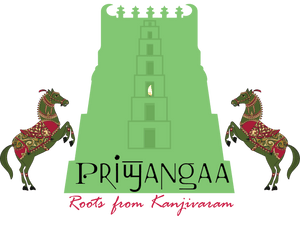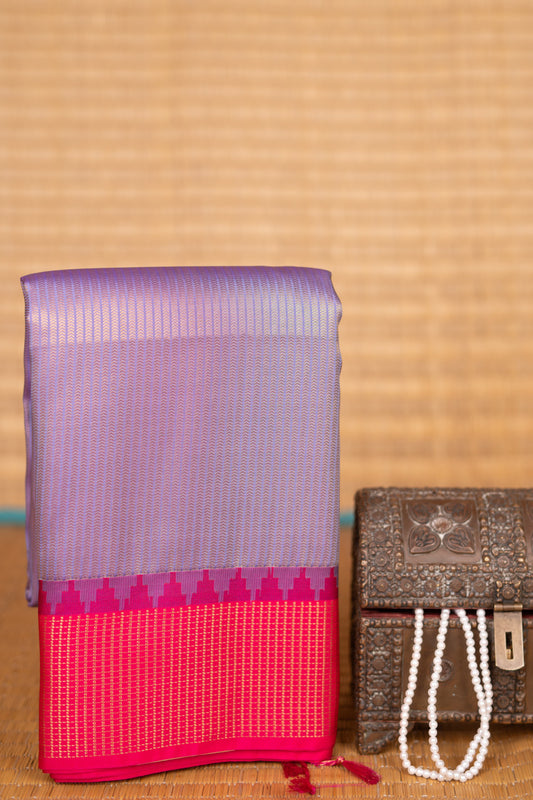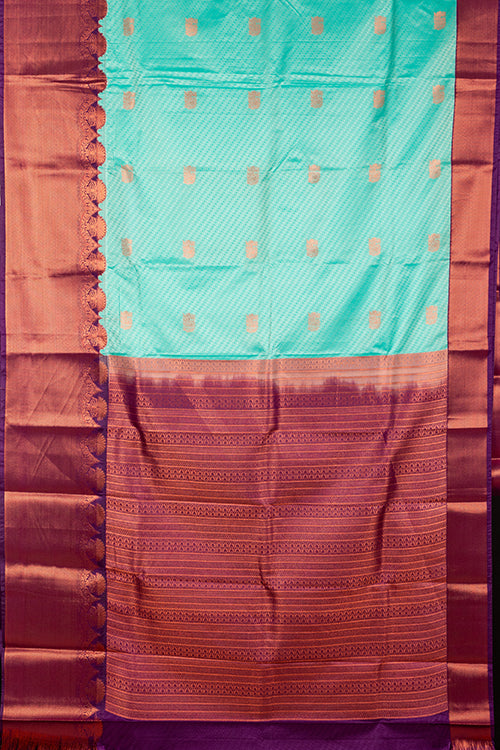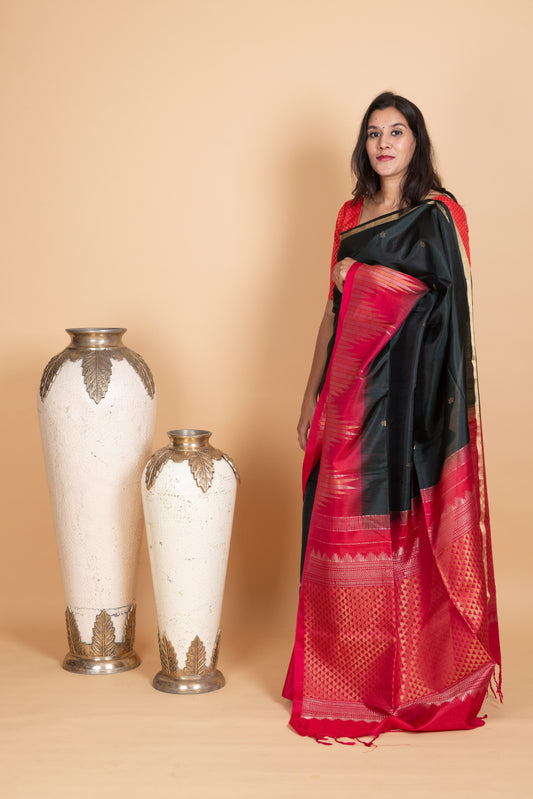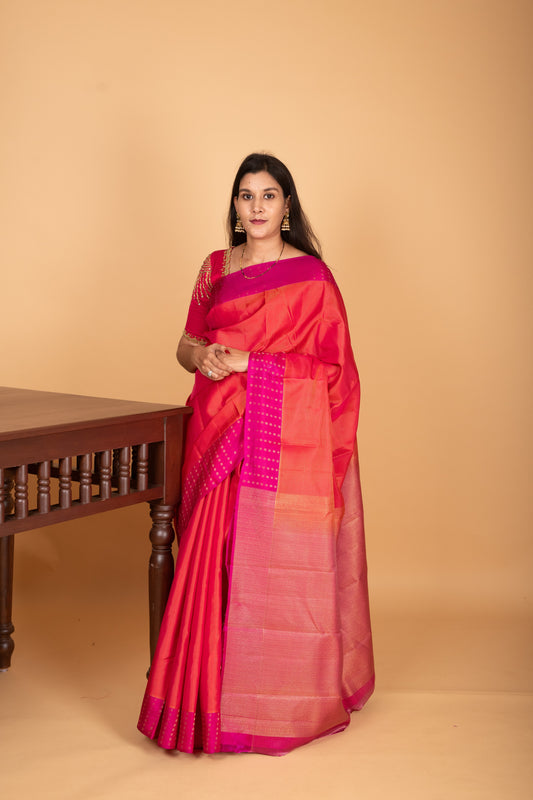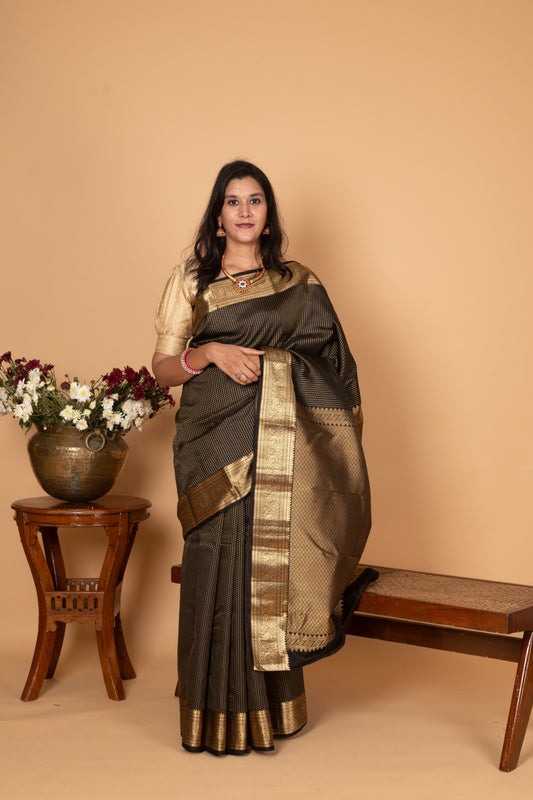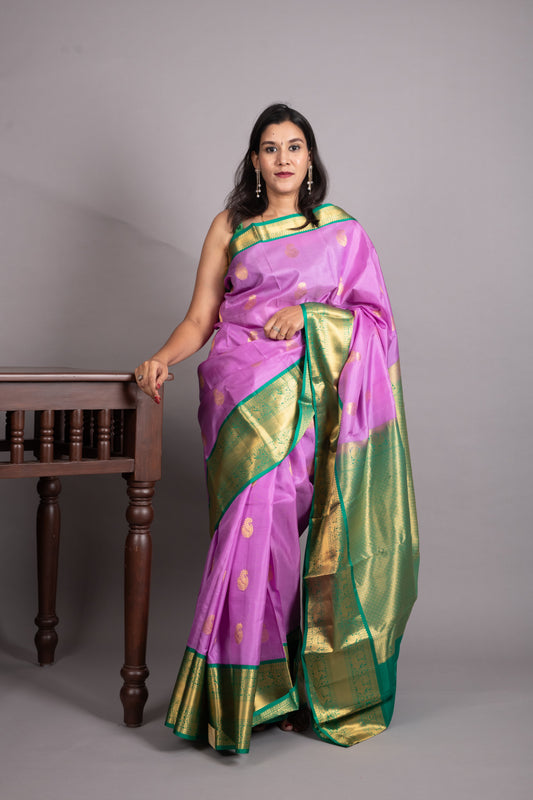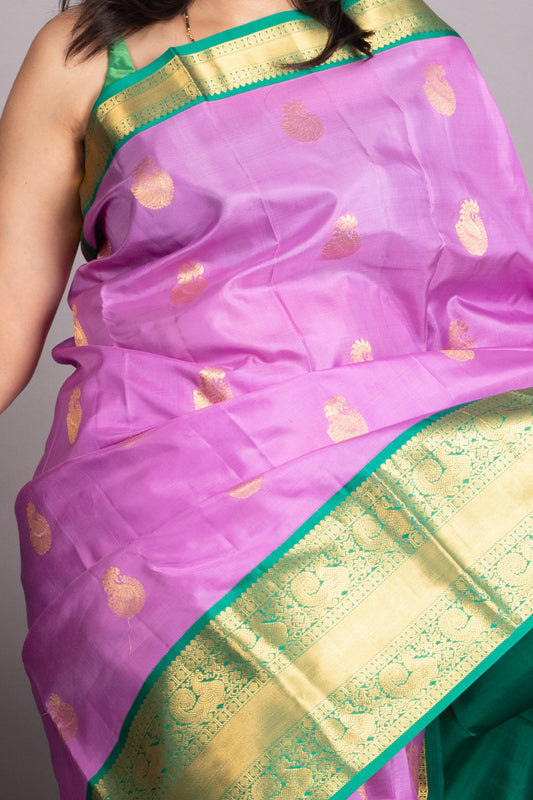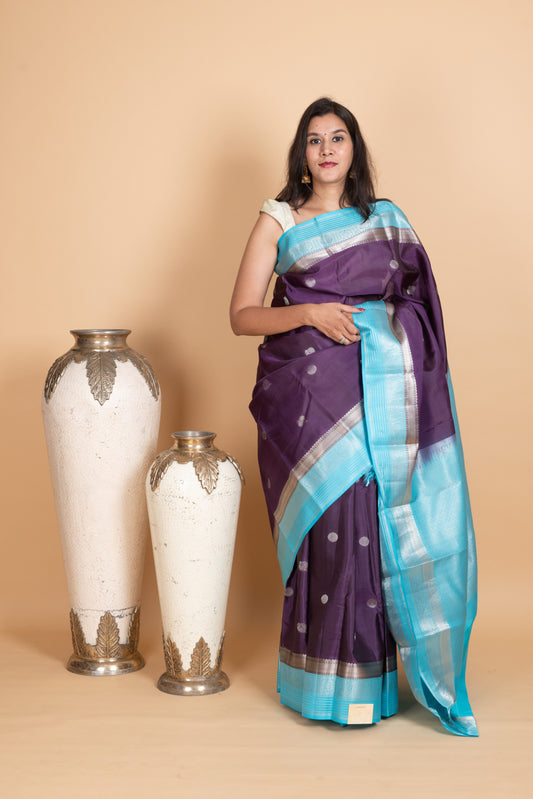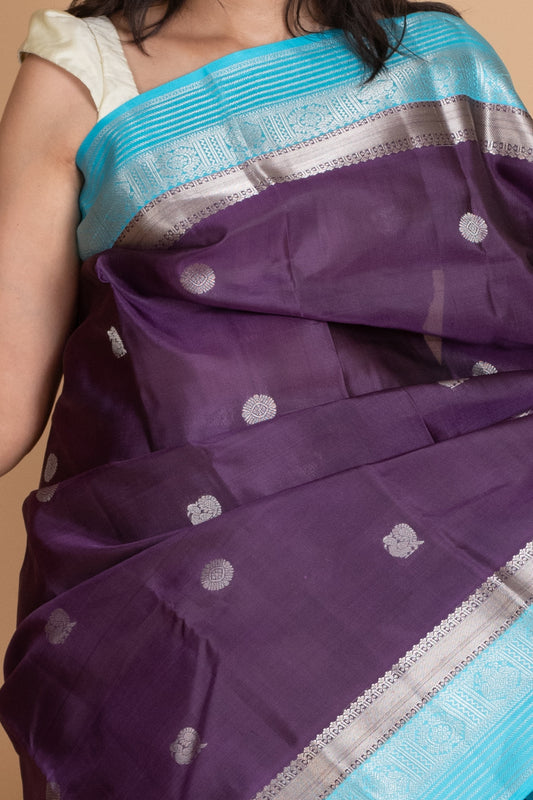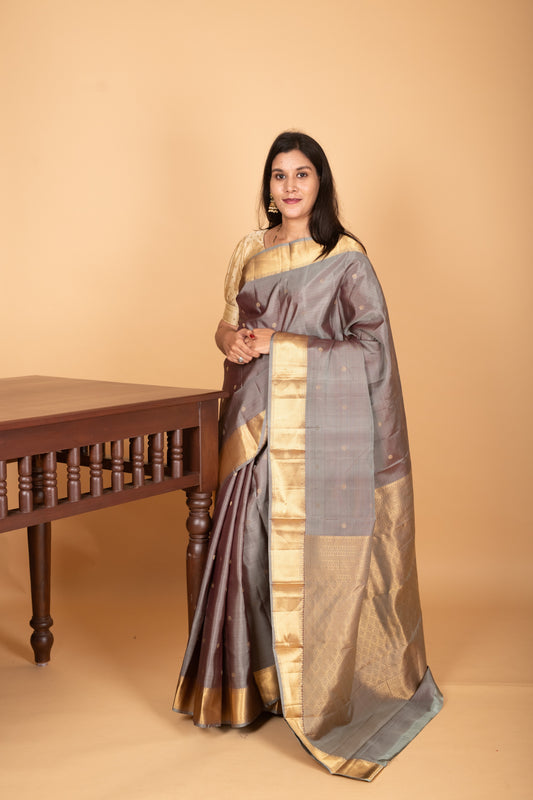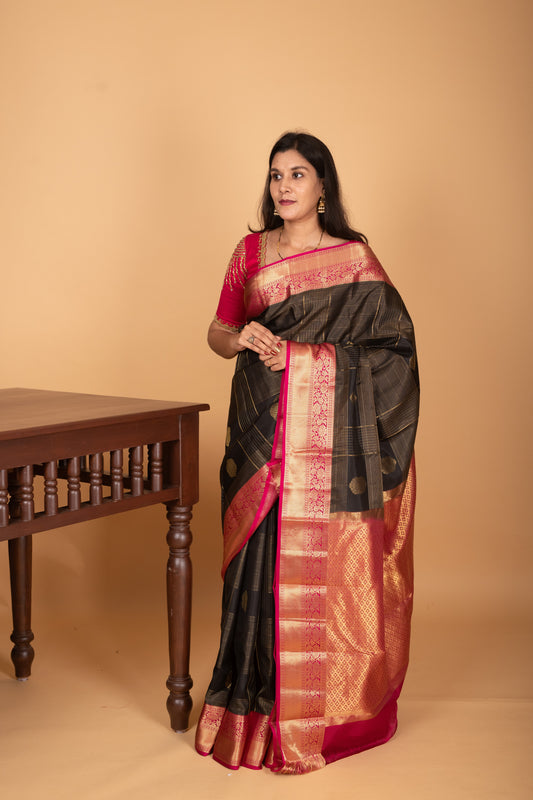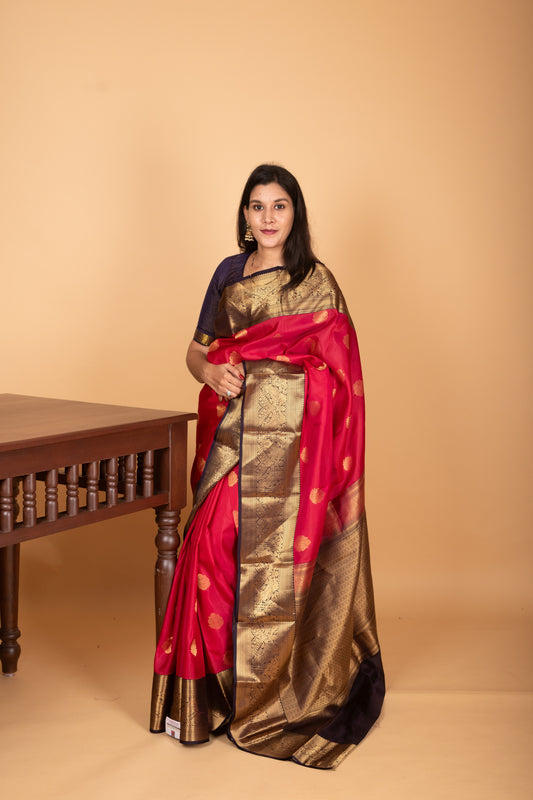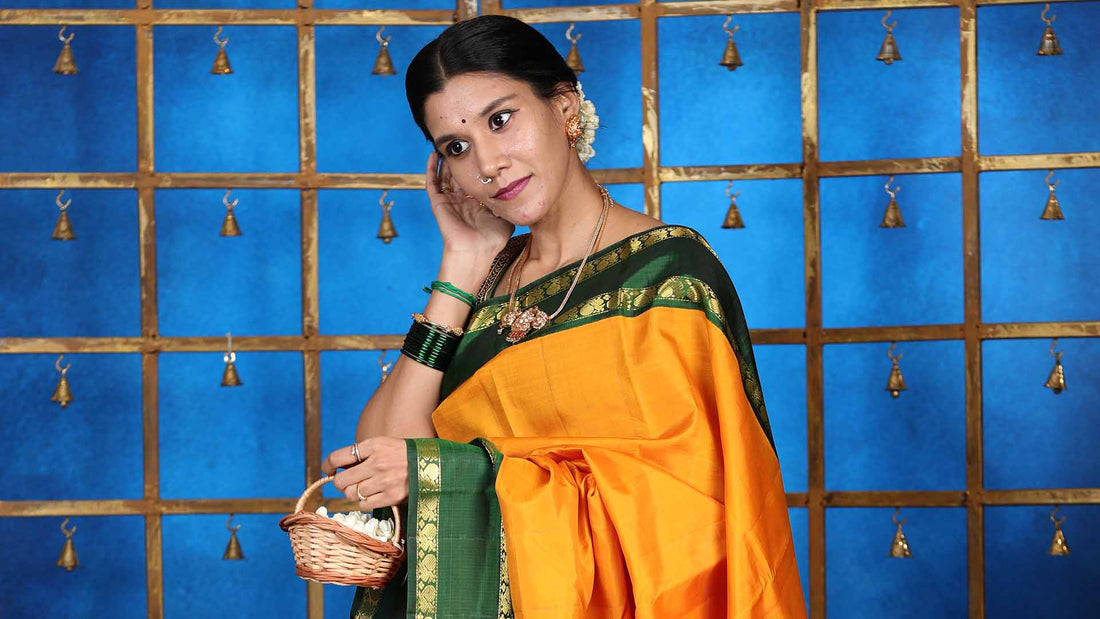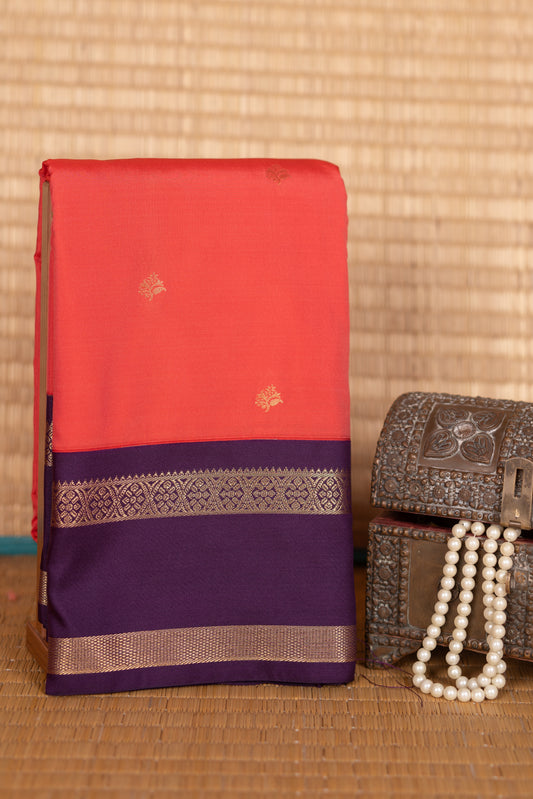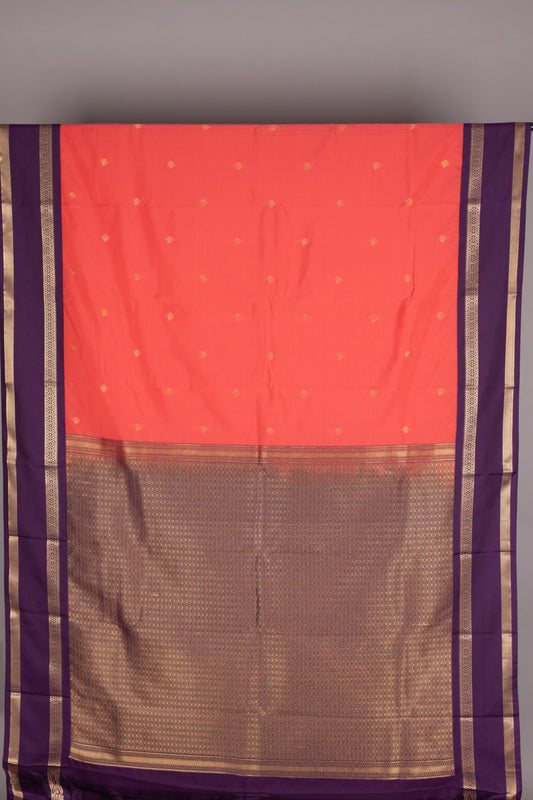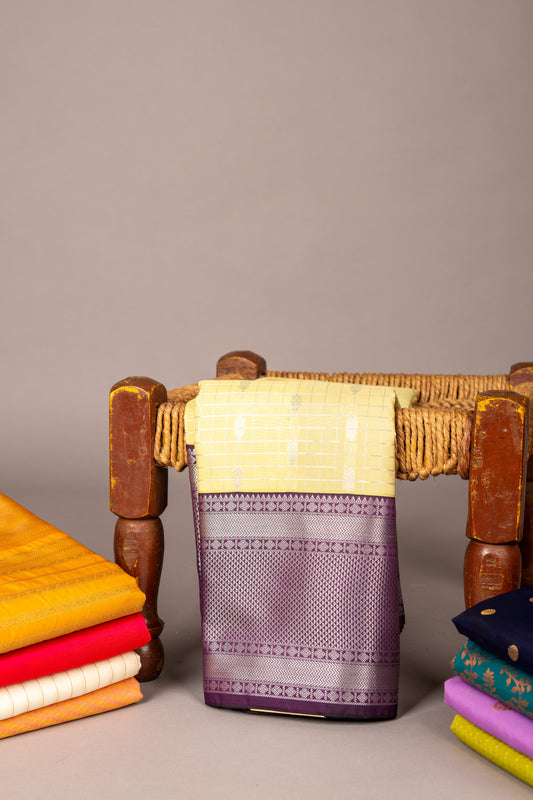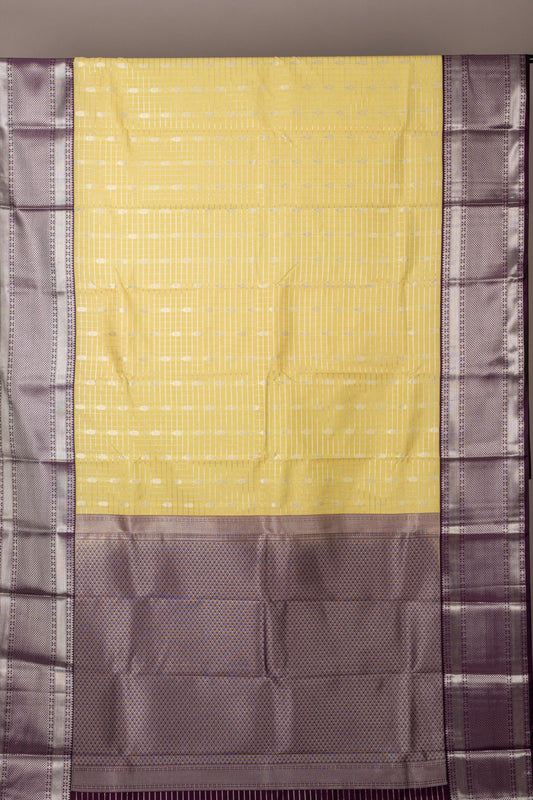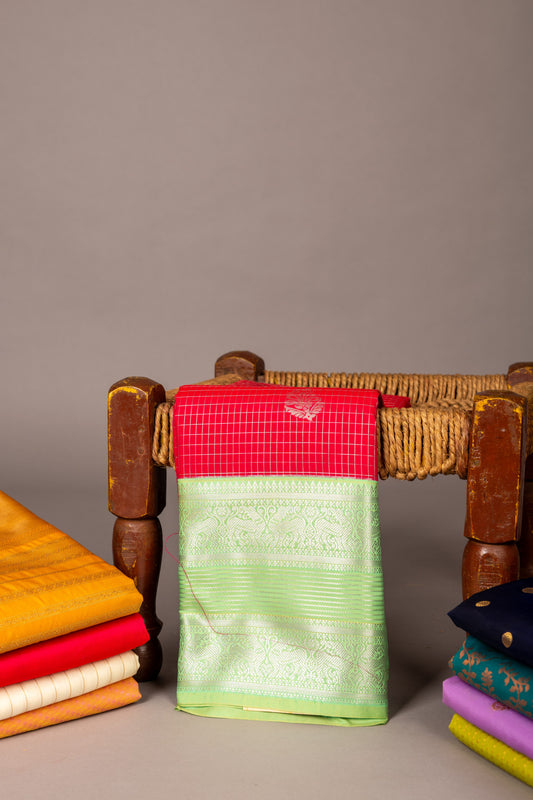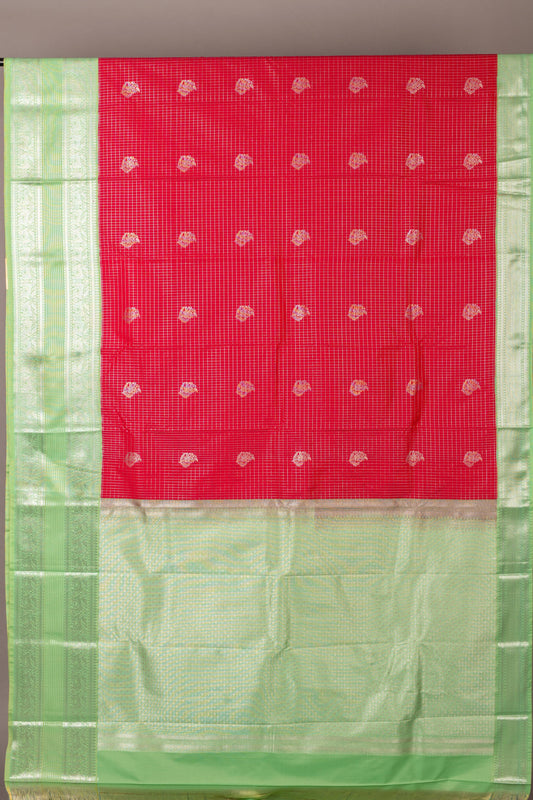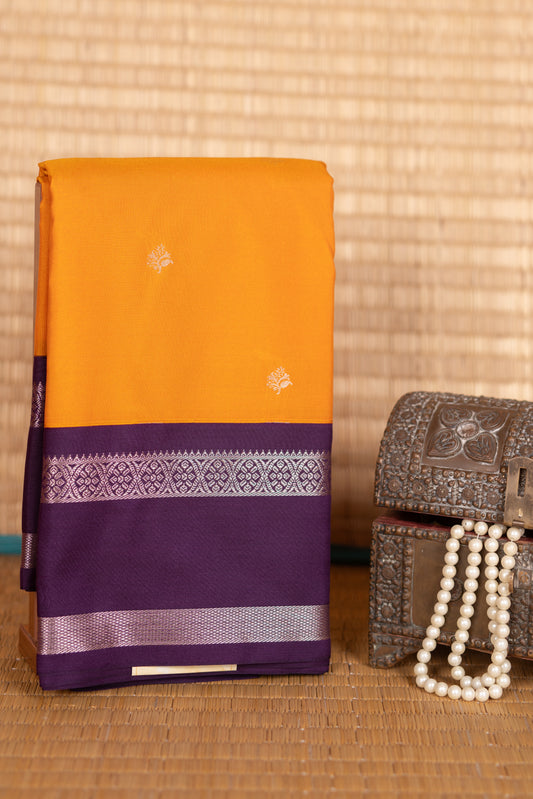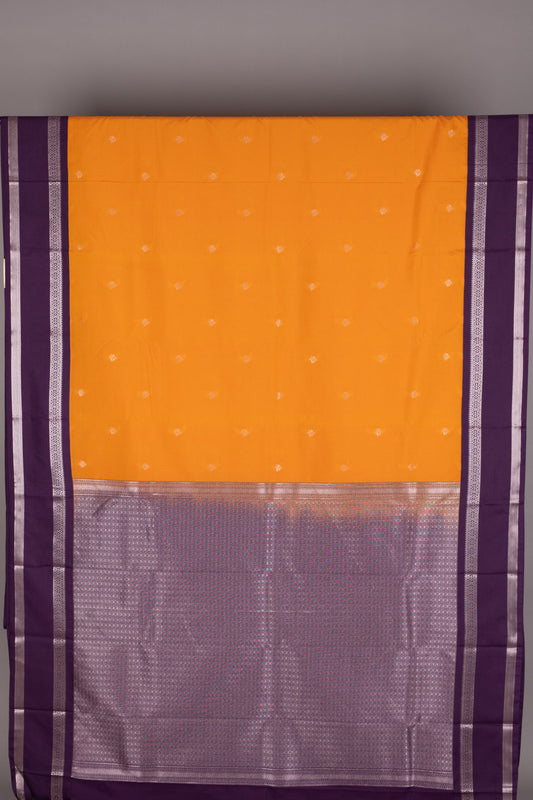History of Tamil Saree
The tale of the Tamil saree is interwoven with the cultural tapestry of the Tamil people, predominantly found in the southern Indian state of Tamil Nadu and parts of Sri Lanka. The saree, an age-old Indian garment, carries cultural significance that sets it apart within the broader spectrum of Indian attire. The Tamil saree boasts a unique history and importance, distinguishing it from sarees worn in other Indian regions.
Ancient Origins: The roots of the Tamil saree stretch back thousands of years. Historical evidence from ancient Tamil literature, sculptures, and artworks indicate the presence of draped garments akin to sarees in the Tamil region since antiquity.
Silken Heritage: Tamil Nadu has been a hub of silk production for centuries. Kanchipuram, a city in Tamil Nadu, is renowned for its opulent silk sarees, often referred to as "Kanchipuram sarees" or "Kanjeevaram sarees." These sarees are celebrated for their intricate weaves, vibrant hues, and luxurious silk fabric. Traditional designs like temple borders, peacocks, checks, and floral patterns adorn Kanchipuram sarees. These sarees are treasured by brides and stand as a symbol of tradition and grandeur.
Cultural Reverence: In Tamil Nadu, the saree embodies cultural reverence. Beyond being a mere garment, it symbolizes the cultural identity and heritage of the region. Distinct communities and locales within Tamil Nadu boast unique saree draping styles and designs, mirroring their individual traditions and practices.
Regional Flavors: Tamil Nadu showcases a variety of saree weaving and designing traditions. Besides Kanchipuram sarees, other well-known types encompass Madurai cotton sarees, Chettinad cotton sarees, Coimbatore silk sarees, and Salem silk sarees. Each variety possesses its own distinct attributes, weaving techniques, and design elements, signifying their respective origins.
Design Evolution: Across centuries, Tamil saree designs, patterns, and techniques have evolved. Traditional motifs inspired by nature, mythology, and cultural symbols remain popular. Modern designers have seamlessly integrated contemporary aesthetics into saree designs, catering to evolving fashion preferences while upholding the essence of tradition.
Global Impact: Tamil sarees have achieved global recognition, embraced by Tamil communities around the world. They are commonly donned during festivals, weddings, cultural events, and significant gatherings, functioning as a means to connect with their ancestral heritage.

Types of Tamil Sarees
Tamil Nadu, a special place in South India, has many different kinds of sarees. Sarees are beautiful pieces of clothing that women wear. Let's talk about some of the famous Tamil sarees:
Kanchipuram Sarees (Kanjeevaram Sarees):
These are super famous sarees from a city called Kanchipuram. They're really special because they use rich silk and have pretty designs made of shiny thread. The designs often have things like lines, squares, and fancy edges.
Madurai Cotton Sarees:
These sarees are from a place called Madurai. They are made of soft cotton and come in bright colors with strong patterns. People like to wear them when it's hot because they're light and comfy.
Chettinad Cotton Sarees:
These sarees come from a special place called Chettinad. They have very detailed patterns that are woven tightly. You can see things like squares, lines, and flowers in the designs.
Coimbatore Silk Sarees:
Coimbatore is a big place for silk. Silk sarees from here are soft and have pretty designs. They're not heavy and can be worn on different occasions.
Salem Silk Sarees:
Salem is another place that makes silk sarees. These sarees are simple but elegant. They use fine silk and have a nice look.
Thanjavur Silk Sarees:
These sarees are named after a special city called Thanjavur. They use beautiful silk and have patterns made with gold thread. These sarees are great for weddings and special events.
Dharmavaram Sarees:
Even though they're not exactly from Tamil Nadu, Dharmavaram sarees from a nearby place are liked by Tamil women. They use heavy silk and have wide edges with fancy designs.
Arani Silk Sarees:
Arani is a town known for silk. Their silk sarees are colorful and have pretty designs.
Pattu Sarees:
In Tamil, "pattu" means silk. Pattu sarees cover lots of different silk sarees made in Tamil Nadu. Each one has its own style and look.
Puducherry Silk Sarees:
Puducherry is near Tamil Nadu and they also make silk sarees. These sarees have a mix of Tamil and French styles in their designs. These are just a few types of sarees from Tamil Nadu. Each kind is special and has its own history and way of being made. They show the art and culture of Tamil Nadu through beautiful clothing.
Weaving Techniques of Tamil Sarees
The weaving techniques used in creating Tamil sarees contribute to their unique beauty and cultural significance. These techniques involve intricate craftsmanship and artistry that have been passed down through generations. Here are some of the weaving techniques commonly employed in the creation of Tamil sarees:
Zari Work:
Zari is a type of metallic thread, often made of silver or gold, that is woven into the fabric to create intricate patterns, borders, and motifs. This technique adds a touch of opulence and elegance to the sarees, particularly in varieties like Kanchipuram sarees.
Brocade Weaving:
Brocade involves weaving patterns into the fabric using supplementary threads of contrasting colors or materials. This creates a raised, embossed effect on the fabric. Brocade weaving is often used to highlight intricate designs, especially in the pallu (the decorative end piece) of the saree.
Resham (Silk Thread) Embroidery:
This technique involves using colorful silk threads to create intricate patterns on the saree. Embroidery can range from simple motifs to complex designs, adding depth and texture to the fabric.
Jamdani Weaving:
Jamdani is a labor-intensive technique that involves weaving small decorative motifs directly into the fabric, creating a beautiful textured effect. It's commonly used in creating patterns and designs on the body of the saree.
Korvai Weaving:
Korvai is a traditional technique where two separate pieces of fabric are woven separately and then intricately joined together to create a seamless design. This is often used in the borders of sarees to create striking patterns.
Butta or Booti Work:
Butta refers to small, intricate motifs that are woven into the fabric. These motifs can vary from flowers and leaves to geometrical shapes. Butta work adds a touch of elegance and uniqueness to the saree.
Checks and Stripes:
Simple yet classic, checks and stripes are woven patterns that can be found in various Tamil sarees. They are often used as a base design on which other intricate patterns are added.
Temple Borders:
Many Tamil sarees feature temple borders, which are intricate and heavily detailed designs inspired by the ornate architecture of temples. These borders run along the edges of the saree and are a hallmark of Kanchipuram sarees.
Floral and Peacock Motifs:
Nature-inspired designs such as flowers and peacocks are commonly woven into Tamil sarees. These motifs add a touch of grace and symbolism to the garments.
Color Blending:
The art of blending different colors of threads while weaving creates a rich and harmonious color palette in the saree. Skillful color blending enhances the overall visual appeal of the garment. These weaving techniques not only showcase the skill and creativity of the weavers but also contribute to the cultural and artistic heritage of Tamil Nadu. The intricacy and beauty of these techniques make Tamil sarees cherished and timeless pieces of art.
Significance of Kanjivaram Silk Sarees in World of Tamil Sarees
Kanjivaram silk sarees hold a significant and esteemed place within the world of Tamil sarees. These sarees are cherished for their exquisite craftsmanship, intricate designs, and cultural importance. Let's delve into the significance of Kanjivaram silk sarees in the realm of Tamil sarees:
Cultural Heritage:
Kanjivaram silk sarees are a living testament to the rich cultural heritage of Tamil Nadu. They embody the traditional artistry, weaving techniques, and design sensibilities that have been passed down through generations.
Symbol of Elegance:
Kanjivaram sarees are renowned for their elegance and opulence. Their heavy silk fabric and intricate zari work make them a symbol of luxury and grandeur. They are often worn during special occasions, weddings, and celebrations.
Artistry of Weaving:
The weaving of Kanjivaram sarees is an intricate and labor-intensive process. Skilled weavers bring life to these sarees by meticulously creating complex patterns, borders, and motifs. The artistry involved showcases the mastery of the craftsmen.
Distinctive Designs:
Kanjivaram sarees are characterized by their distinct designs, often inspired by temple architecture, nature, and mythology. The patterns and motifs woven into the sarees tell stories and carry cultural symbolism.
Cultural Identity:
Wearing a Kanjivaram silk saree isn't just about clothing; it's a way of expressing one's cultural identity and affiliation with Tamil Nadu's artistic heritage. These sarees are cherished as a representation of Tamil culture.
Bridal Tradition:
Kanjivaram sarees are a popular choice for brides in South India. They symbolize prosperity, auspiciousness, and marital bliss. Brides often consider wearing a Kanjivaram saree on their wedding day as a cultural tradition.
Economic Significance:
The production of Kanjivaram sarees supports local economies and provides employment opportunities to skilled weavers. The sarees contribute to the livelihoods of numerous families in weaving communities.
Showcasing Expertise:
Kanjivaram sarees showcase the exceptional weaving expertise of Tamil Nadu. The skill of blending vibrant colors, creating intricate designs, and combining zari work reflects the weavers' dedication to preserving traditional techniques.
Passing Down Tradition:
By wearing Kanjivaram sarees, younger generations celebrate and carry forward the legacy of their ancestors. The sarees connect people to their roots and encourage the continuation of age-old weaving methods.
Global Recognition:
Kanjivaram silk sarees have gained international recognition for their artistry and beauty. They are coveted not only within India but also among global admirers of traditional textiles. In essence, Kanjivaram silk sarees are more than just pieces of clothing; they encapsulate the essence of Tamil Nadu's art, culture, and craftsmanship. As a cherished cultural icon, these sarees continue to adorn women with a touch of elegance while embodying the timeless legacy of Tamil tradition.
Conclusion
In a tapestry of tradition and artistry, Tamil sarees are threads that connect the past, present, and future. They embody cultural identity, showcase intricate craftsmanship, and weave together stories of generations. These sarees stand as living symbols of Tamil Nadu's rich heritage, elegance, and enduring cultural significance.
Shop Now
Grape and Sky Blue Kanjivaram Pattu Saree
- Rs. 11,900.00
Rs. 11,900.00- Rs. 11,900.00
- (-0%)
- Unit price
- / per
Pinkish Red and Purple semi silk saree
- Rs. 2,650.00
Rs. 2,650.00- Rs. 2,650.00
- (-0%)
- Unit price
- / per
Offwhite and purple semi silk saree
- Rs. 2,950.00
Rs. 2,950.00- Rs. 2,950.00
- (-0%)
- Unit price
- / per
Aqua green and reddish pink semi silk saree
- Rs. 2,950.00
Rs. 2,950.00- Rs. 2,950.00
- (-0%)
- Unit price
- / per
Golden marguerite yellow And Purple Semi Silk Saree
- Rs. 2,650.00
Rs. 2,650.00- Rs. 2,650.00
- (-0%)
- Unit price
- / per
